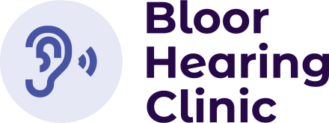
Our Blog
ABR Test: Hearing Assessment for Children (Parents’ Guide)

As a parent, one of the most important things you can do early in your child’s life is ensure their hearing is developing normally. Hearing is essential to speech and language development, and undiagnosed hearing issues can delay critical learning milestones.
One of the most effective tools in early hearing assessment is the ABR test (short for Auditory Brainstem Response). Since it’s an objective test, it does not rely on a patient’s response to sound, making it suitable for infants who cannot provide behavioral responses.
In this guide, we’ll walk you through what the ABR test is, how it’s performed, and what you can expect before, during, and after your child’s appointment.
Why Do Children Need Hearing Assessments?
Children, especially infants and toddlers, may not be able to communicate when they can’t hear properly. That’s why hearing tests are critical, even in the absence of obvious symptoms.
In Canada, approximately 1–3 per 1,000 live births have congenital hearing loss, with an average diagnosis age of 3 months. Although the country follows global guidelines (screen by 1 month, diagnose by 3 months, intervention by 6 months), many jurisdictions fall short. This emphasizes the importance of early detection and timely intervention, which supports better outcomes in speech, language, and learning.
Some children are referred for testing because they failed an initial newborn screening, had middle ear infections, or have developmental delays. Others may show signs like not responding to different sounds or falling behind in language milestones.
What Is an ABR Test? (AKA BAER Test)
The Auditory Brainstem Response (ABR) test, also known as the Brainstem Auditory Evoked Response (BAER) test, is a non-invasive procedure that checks how the auditory nerve and brainstem respond to sound. It evaluates the entire hearing pathway from the inner ear to the brain, particularly when it’s difficult to assess hearing behaviorally.
This test does not require the child to speak or react, making it ideal for newborns and infants. Older children who can’t participate in other hearing tests or have hearing challenges can also benefit from this test.
Here’s a more detailed explanation of what it does:
The ABR test records the electrical activity in the auditory pathway, which is the route sound travels from the ear to the brainstem.
The test can help determine the presence, type, and extent of hearing loss through an analysis of the electrical activity.
The test provides objective information about hearing, unlike behavioral tests that can be influenced by factors like attention or motivation.
How Are ABR Tests Used for Newborn Screening?
ABR is often part of the universal newborn hearing screening. Small earphones deliver sounds into the child’s ears while electrodes placed on the baby’s head measure electrical activity in response to those sounds. This helps identify whether the cochlea and auditory nerve are responding appropriately.
Here’s how it’s done:
Electrode placement: Electrodes are placed on the scalp and earlobes to detect the electrical activity.
Sound presentation: Clicking sounds or tones are presented through earphones.
Brain response recording: The brain’s response to the sounds is recorded by the electrodes and displayed on a computer screen.
Interpretation: An audiologist analyzes the recorded brainstem responses to determine the hearing status.
What Are ABR Tests For?
An ABR test hearing evaluation helps identify potential hearing loss and its characteristics. Its purposes include the following:
Detecting mild to profound hearing loss
Determining hearing loss type and degree
Assessing auditory nerve disorders
Identifying problems with the brainstem related to sound processing
Determining whether a child is a candidate for hearing aids or cochlear implants
Monitoring hearing in at-risk individuals
Diagnosing neurological conditions
Evaluating hearing in difficult-to-test individuals
It’s also used when speech language pathologists or audiologists suspect hearing issues that can’t be confirmed by behavioral testing.
📚 Related Article: Discover the five most common types of hearing tests that evaluate different areas of your hearing health. |
Are ABR Tests Safe for Children?
Yes. Auditory brainstem response testing is completely safe. It doesn’t send anything into the brain. It only records how the brain reacts to sound. There’s no radiation, and no pain involved.
For younger children or those who can’t stay still, sedation might be needed. Even then, risks are minimal when proper protocols are followed in a controlled environment like an audiology or hospital setting.
How Do You Get Ready for an ABR Test?
Preparation depends on your child’s age and whether sedation will be used. Here’s what most parents should expect before the test:
Schedule the test when your baby is likely to be sleepy: Most babies will sleep through the test if they are tired and hungry.
Don’t let the baby nap beforehand: Keep the baby awake and try to delay feeding until you are at the testing site.
Arrive at the testing location with a hungry and tired baby: This will allow you to feed the baby and get them to sleep once you are settled in the testing room.
Clean the baby’s forehead and ears: Use a small alcohol wipe to remove any lotions or oils, ensuring good electrode adhesion.
Bring comfort items: If your baby has a favorite blanket or stuffed animal, bring it along to help them feel secure and aid in falling asleep.
Bring a second caregiver if possible: This can be helpful for managing the baby’s comfort during the test.
During the test:
The baby will be lying down: You can either hold the baby or place them in a crib, whichever is more comfortable.
Electrodes will be attached to the baby’s head: These are small stickers that record brain activity.
Earphones will be placed in or over the baby’s ears: These deliver the sounds for the test.
The audiologist will monitor the baby’s brainwave activity: They will be looking for specific responses to the sounds.
The test is painless and non-invasive: It does not cause any discomfort to the baby.
The test can take about 1-2 hours: Be prepared to be patient.
You can breastfeed or bottle-feed the baby during the test: This can help them fall asleep and stay asleep.
Following these steps can help ensure a smooth and successful ABR test for your baby. Talk to your doctor or audiologist beforehand about specific instructions for your child’s ABR test.
Will You Be Able To Accompany Your Child?
Yes. In most cases, parents can stay during the setup, and often during the test itself, especially if the child sleeps or rests. However, you may not be able to stay in the testing room itself if your presence might interfere with the results (e.g., causing noise or movement), particularly in hospital or clinical settings with strict protocols.
You will usually be nearby or in the same room during preparation and can return immediately after the test. Clinics typically explain the process beforehand and try to make your child as comfortable as possible.
If general anesthesia is used, you’ll wait in the recovery room after the procedure. Your presence can help your child feel more secure.
It’s always best practice to check with the specific clinic or hospital in advance, as policies can vary.
How Is the ABR Test Performed?
During an ABR test, your child will be lying down, ideally asleep or sedated. Here’s what typically happens:
A nurse or audiologist places small electrodes on the child’s head.
Earphones deliver a series of clicks or tones at varying loudness levels into his or her ears.
The computer records the brain’s response to each sound.
The test is quiet and painless; the child remains still throughout.
Is Sedation Really Necessary for an ABR?
For older children who can lie still and sleep naturally, sedation isn’t always needed. However, sedated ABR tests are sometimes necessary for accurate results, especially if movement or wakefulness interferes with data collection. Your healthcare team will help you decide what’s best.
How Much Time Does an ABR Take?
A typical ABR test takes between 1 and 2 hours. This includes setup, the actual recording time, and recovery (if sedation is used). You may be asked to stay a little longer for observation after the procedure.
When Do You Get the Results?
In many cases, you’ll receive a preliminary computer printout or verbal summary on the same day. A full interpretation may follow within a few days, especially if the audiologist needs to review more data or consult with a doctor or specialist.
What Should You Do After the Test?
If your child was sedated, they’ll be monitored in a recovery room before being cleared to go home. Most kids can return to normal activities within a few hours.
Once results are confirmed, your audiologist or healthcare provider will:
Discuss whether your child has normal hearing or any level of hearing loss.
Recommend further evaluation or treatment options if needed.
Refer you to speech language specialists or early intervention services.
Conclusion
The ABR test is a valuable tool in diagnosing hearing problems in children, from infants to older children. It’s safe, accurate, and helps detect issues that could affect your child’s ability to hear, speak, and learn. Understanding what the ABR test measures and how to prepare for it can help you confidently support your child through the process.
At Bloor Hearing Clinic, we care for the hearing health of the whole family, from adults managing age-related changes to children developing speech and language. That’s why we emphasize the importance of regular hearing tests, especially for children. If you have concerns about your child’s hearing, don’t wait. Early screening tests like the ABR can make all the difference in your child’s future.
